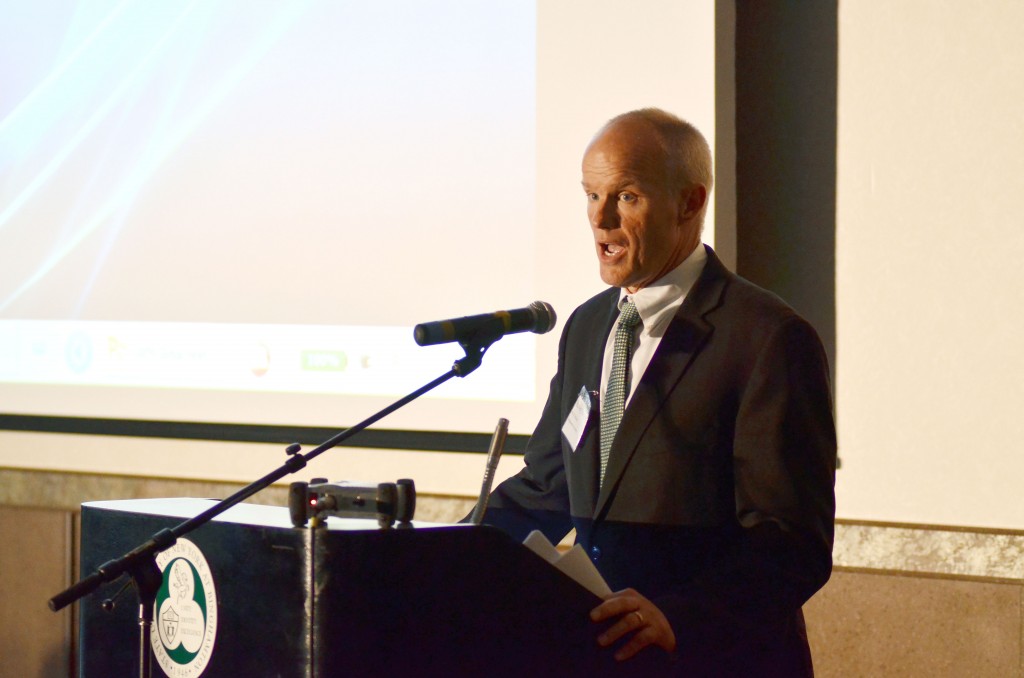
President Harvey Stenger released the Road Map to Success’ first progress report, updating students and faculty on the advancements that Binghamton University has made.
The progress report, released on Oct. 10, detailed the administration’s activity during the 2013-2014 academic year. All of last year’s 46 projects advanced since their implementation. The administration presented an updated budget process and created a new set of goals for the University.
Among the notable accomplishments are the expansion of the University Tutoring Services, hiring staff to support international students and help them succeed, as well as a continuation of the University’s construction plans.
Stenger said the Strategic Priority program, which focuses on improving teaching methods, is the most successful project implemented this past year. The faculty work to promote better teaching methods, like incorporating technology such as Smart Boards into the classrooms.
“We appointed James M. Pitarresi, a distinguished teaching professor, as the director for the Center of Learning and Teaching about a year ago,” Stenger said. “He’s been trying to help people become better teachers, trying to give them support, but also showing them how to use new technology.”
Stenger said other successes from Road Map to Success include the pharmacy school, an increased number of international students, more staff for both the Harpur College of Arts and Sciences and Thomas J. Watson School of Engineering and Applied Science advising, and the expansion of the Fleishman Center for Career and Professional Development.
According to Greg Delviscio, associate vice president for University Communications and Marketing, the hardest part of implementing the Road Map to Success has been deciding which ideas were the most pressing.
“I don’t know if I would even consider this an obstacle, but there are definitely a lot of great ideas out there on campus and sometimes there’s not enough money to go around to fund everyone’s great ideas,” Delviscio said. “That’s where this steering committee comes into play: To be able to find out what ideas are worth funding and being able to put them forward based on the goals of the University.”
Stenger said he began the Road Map to Success initiative to make BU a more progressive, modern school.
“I used four words: one was excellence, one was balance, one was accountability and one was pride. Those are the four ingredients of a premier public university,” Stenger said. “Can we measure all those things? It’s really hard, but you know when you’ve got it and you know when it’s getting better.”
Funding for the Road Map to Success began in the fall of 2013. Five teams made up of faculty, community members, staff and student interns chose 190 projects to implement from faculty and staff submissions. Vice presidents of the Road Map to Success then picked 46 finalists’ projects to fund and implement.
Ganna Veresotska, an original intern for Road Map to Success, graduated last spring with her master’s in accounting. She said it was a challenging but fun experience.
“It was a pleasure working with such motivated and enthusiastic people with such diverse backgrounds,” Veresotska said. “With each day there was something new to learn and it kept me challenged.”
According to Stenger, Road Map to Success is constantly being reorganized and reevaluated to find ways to enable success.
“We update every week,” Stenger said. ”It’s catching on, but it’s like fire; you’ve got to keep putting wood on it to keep it going.”


